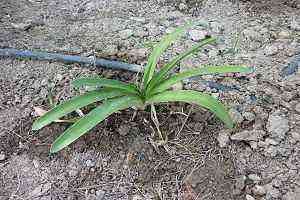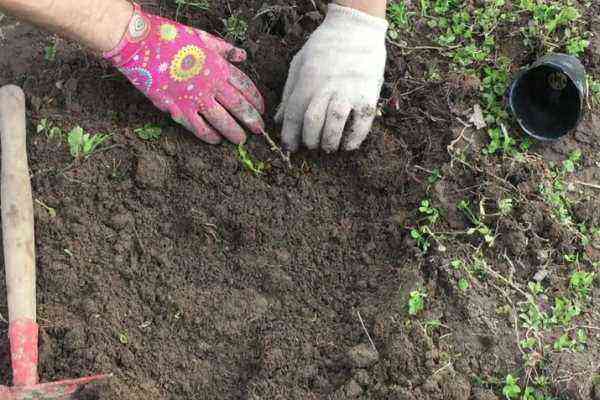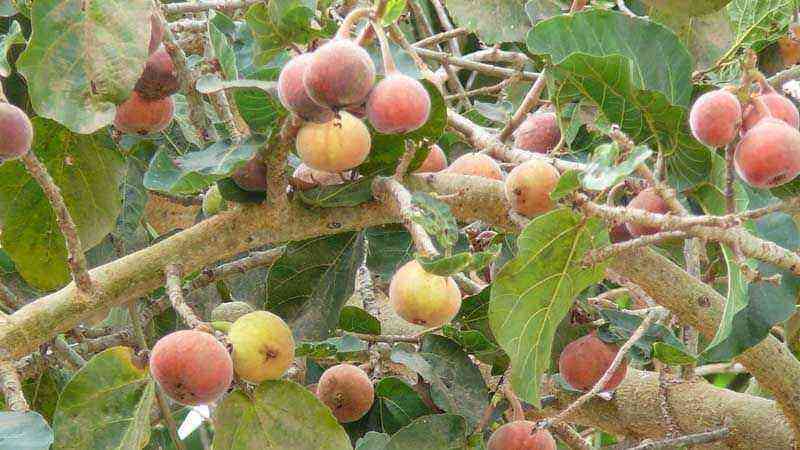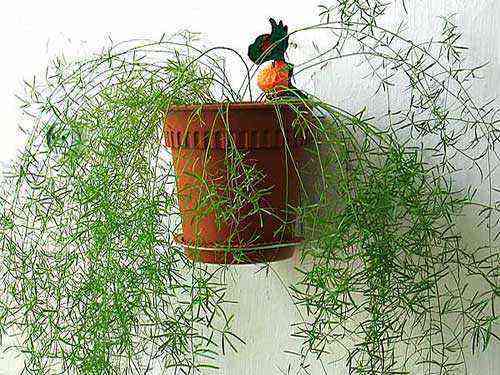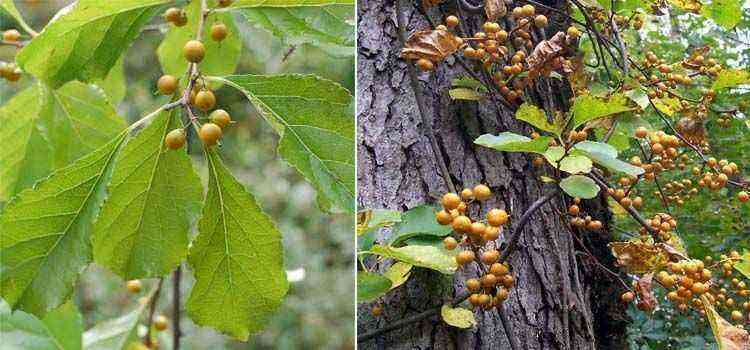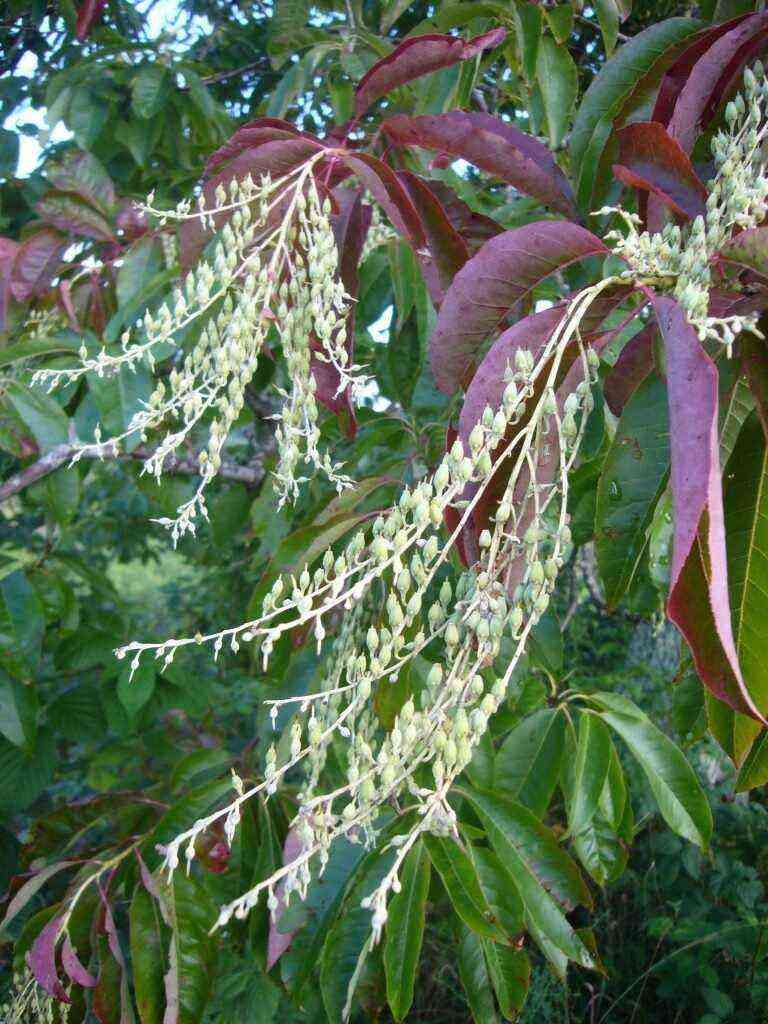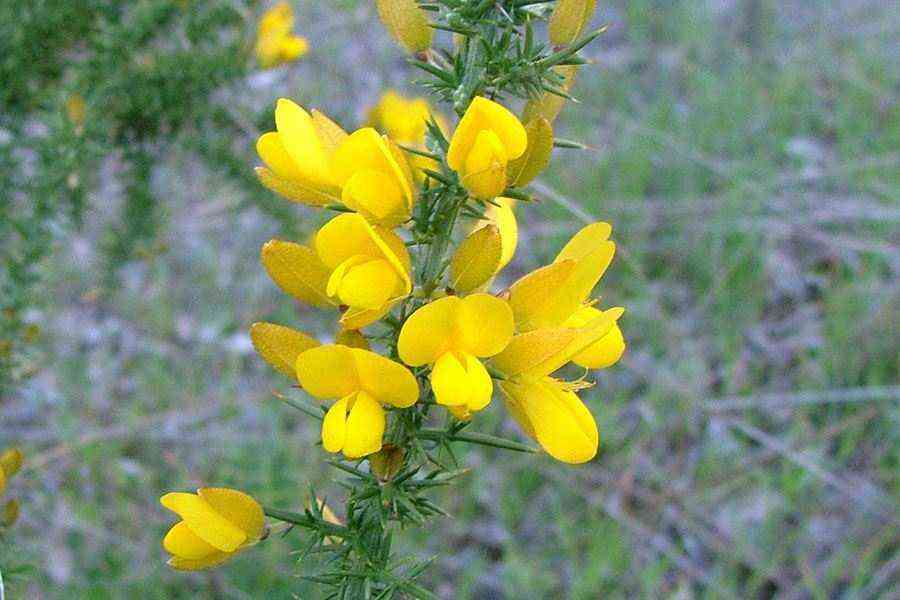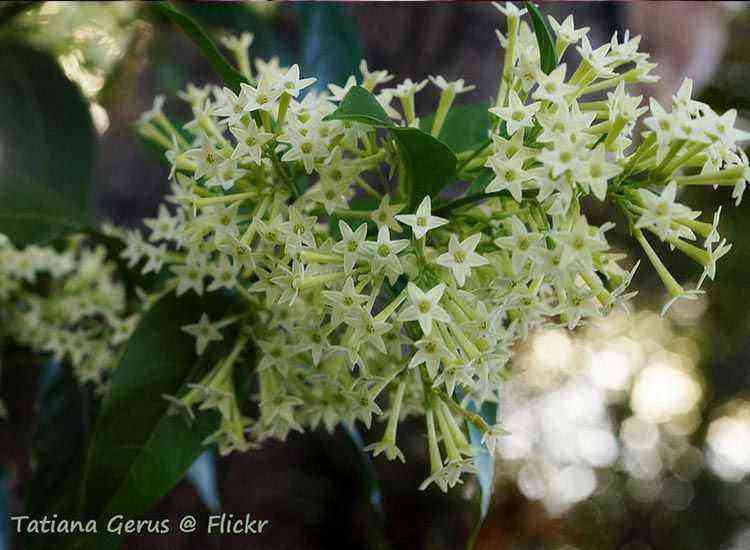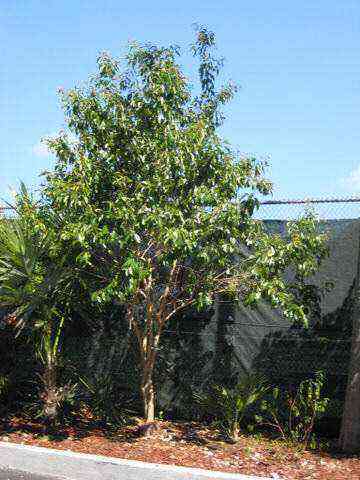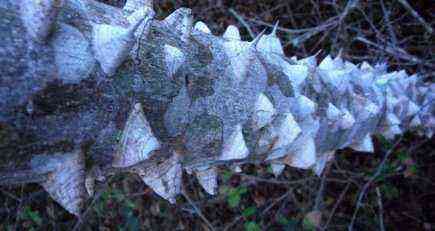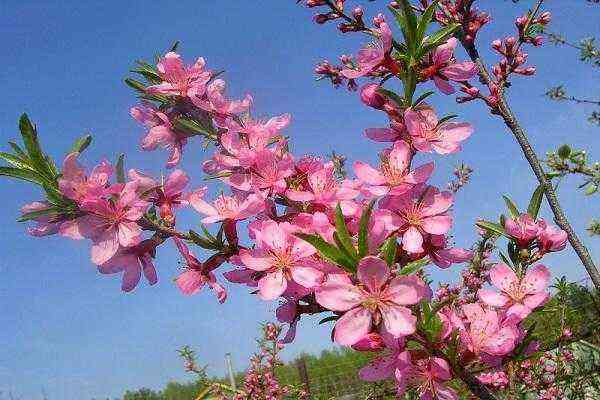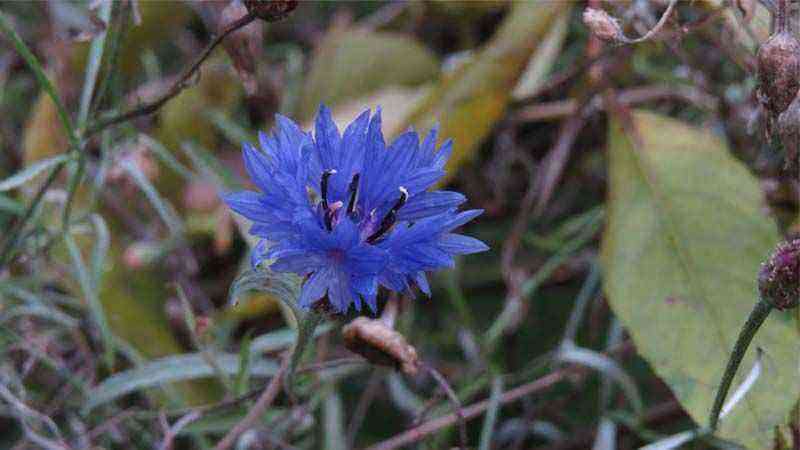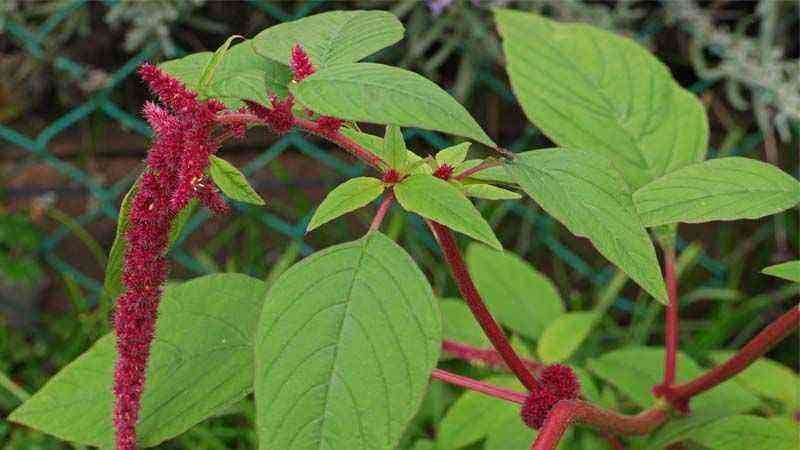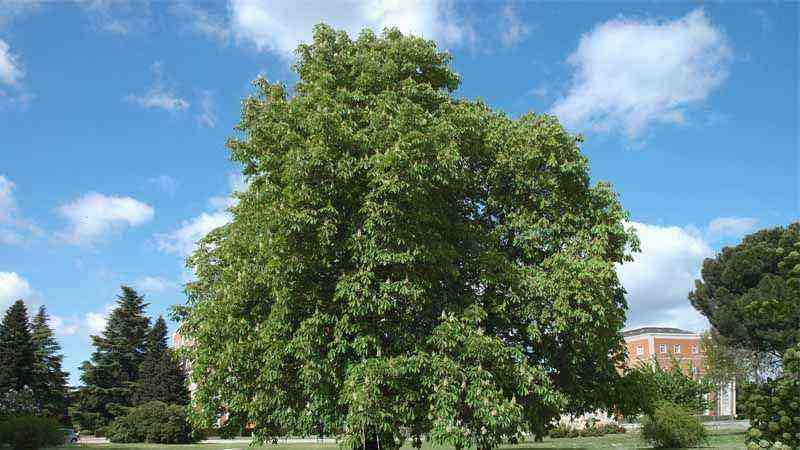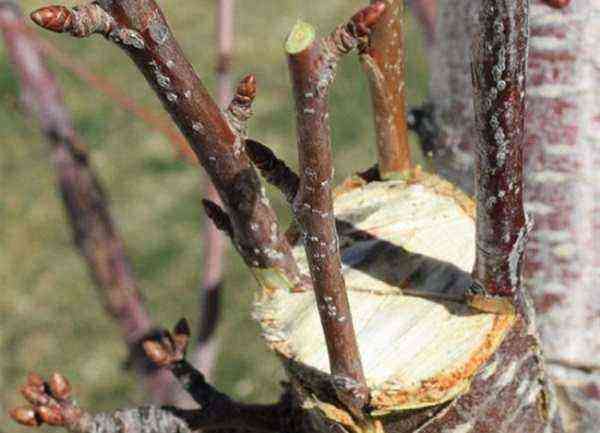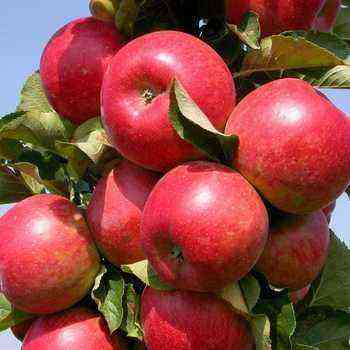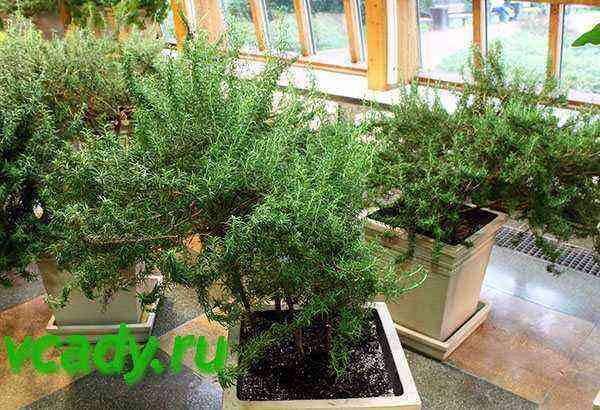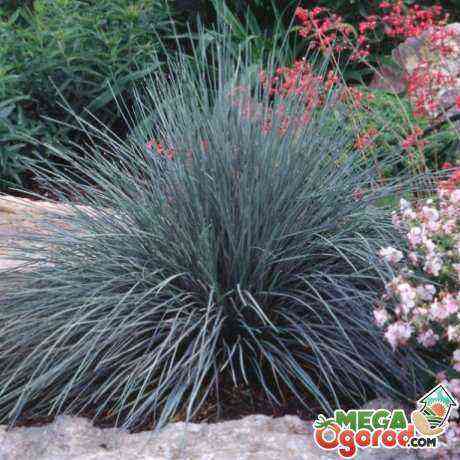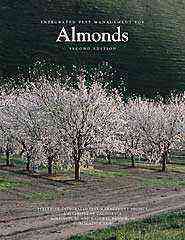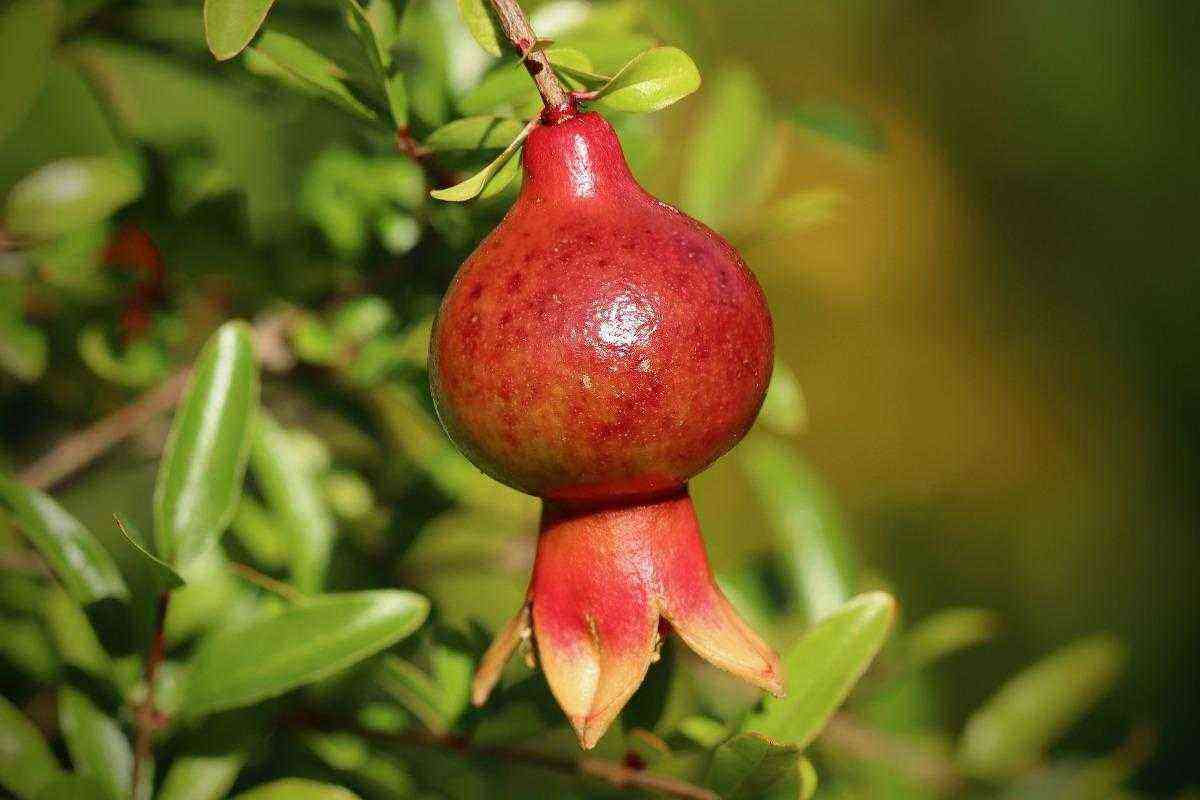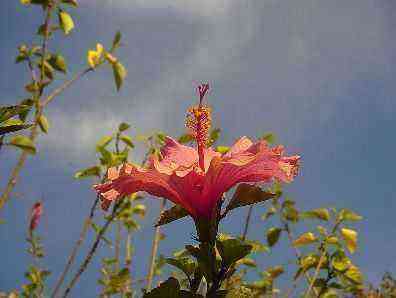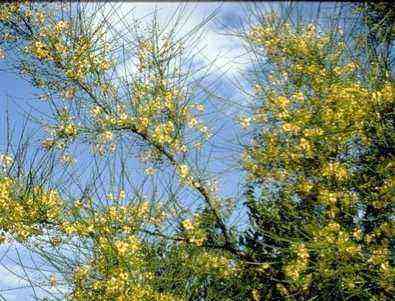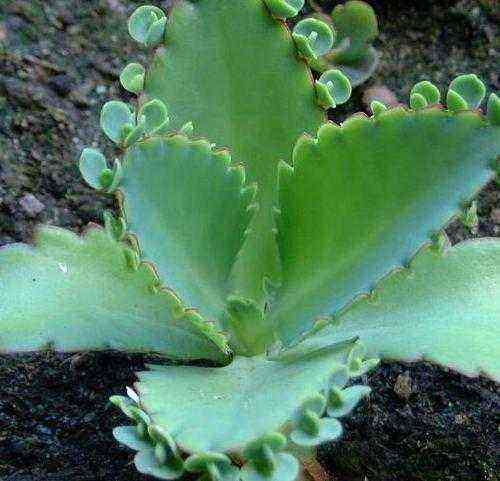Previously, this plant grew only in hot countries with a tropical climate, now there are new species that can withstand severe enough frosts, so the plant is now planted and grown in middle and northern latitudes.
In nature, Buddleja can be found in Asia, Africa and America in the form of a tree up to 5 meters in height, it grows for about 10 years.
How to care for lilacs after flowering and in the fall, so that it blooms magnificently next year
So what should you do with lilac bushes in the fall? As a rule, autumn shrub care includes the following activities:
- Pruning and removing faded inflorescences (after flowering).
This is the most important procedure, so we will talk about it in more detail in a separate paragraph.
- Also, after flowering, you can transplant the shrub to a new location .
- Watering. Lilacs are not very demanding on moisture, therefore they perfectly tolerate long dry weather. However, moisture is very much needed by the shrub during the autumn growth of the roots, therefore, in September-October, water-charging irrigation is carried out, pouring 3-5 buckets of water under each bush (you do not need to carry any buckets: water from a hose).
- Top dressing.
- Mulching and shelter for the winter. And we will talk about the expediency of these procedures at the very end of the article.
Video: caring for lilacs after flowering
Lunar landing, unfavorable days


The lunar landing calendar for lilacs contains a list of auspicious days. For the convenience of gardeners, the recommendations of the calendar are summarized in a table.
| Auspicious days of August | Auspicious days of September |
| 1, 2 growing | 1 growing |
| 3 full moon | 2 full moon |
| 20-31 growing | 18-30 growing |
Planting days in 2020 for lilacs fall throughout August and September, but in central Russia it is better to start planting after September 20. The Moscow region, the Leningrad region, the Volga region, the Krasnodar region – in these regions, you can start landing in the first days of the last month of summer.
Do not do garden work on the new moon and certain unfavorable days. New moon in August on the 19th, in September 17. Unfavorable days in September are associated with the fall of the Sun and the tense aspects of Saturn and Mars. This trigone negatively affects all flowers and shrubs. September 3, 4, 8, 12 – an unsuccessful day for transplanting lilac seedlings.
Pruning lilacs in autumn (after flowering) and spring
Without proper pruning, lilacs will start to run wild and degenerate in a few years. It will overgrow strongly, and all inflorescences will form only at the very top. But in the center, the bush will be empty.
Next, let’s talk in more detail about when and how to properly cut lilacs so that it blooms profusely and magnificently.

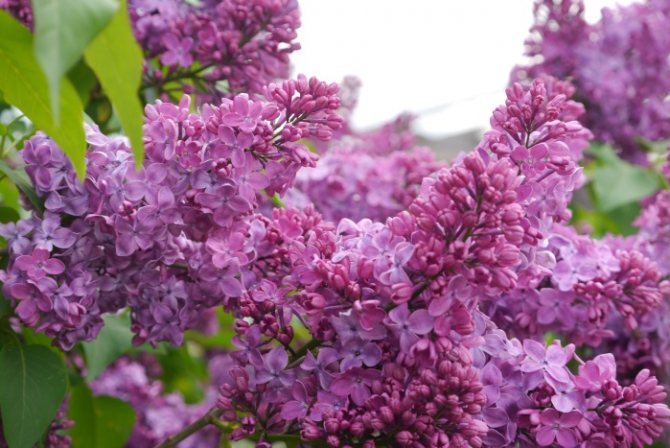
There is a common belief that the more the lilac is cut or cut, the better it will bloom. This is not at all the case, so pruning must be done in accordance with very important rules and recommendations.
Pay attention! It is very undesirable to break out the branches of blooming lilacs. The fact is that where the inflorescence (brush) is attached, there is a bifurcation of the branches. Flower buds will form on them. If you break them down, then there will be no flowering. It would be a different matter if only the inflorescence itself was broken out, and in fact it is usually broken with a branch. Therefore, the lilac may not bloom (due to improper pruning and frequent breaking off of branches).
But! Every spring, children and adults break off the flowering branches of the lilac, and every year it blooms magnificently again.


Indeed, the correct pruning after flowering is of great importance for the future flowering of lilacs , namely, the removal of faded panicles in the middle of summer – in July. Thanks to this, the shrub will stop spending energy on their nutrition and the formation of seeds, the growth of young shoots is activated in it, new flower buds begin to form.
Important! You only need to cut off the faded brush itself, without affecting the 2 lower branches, on which flower buds will form. Only in this case can you count on the most abundant and lush bloom next year.

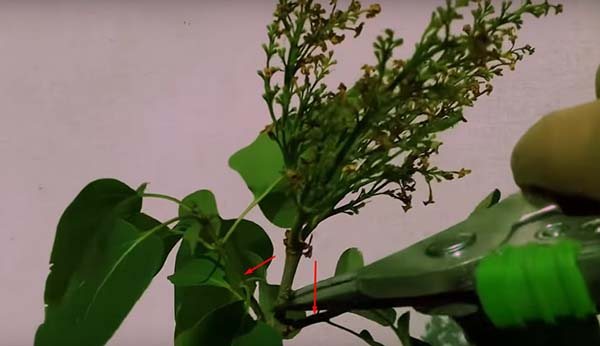
Formative and thinning pruning of lilacs involves shortening and removing certain parts of the plant and is carried out according to the following scheme (shown in the picture):
- old inflorescences;
- too long branches;
- directed inside the bush;
- thin and weak twigs;
- old branches;
By the way! In addition to too long and old branches, it is necessary to remove excess root growth .
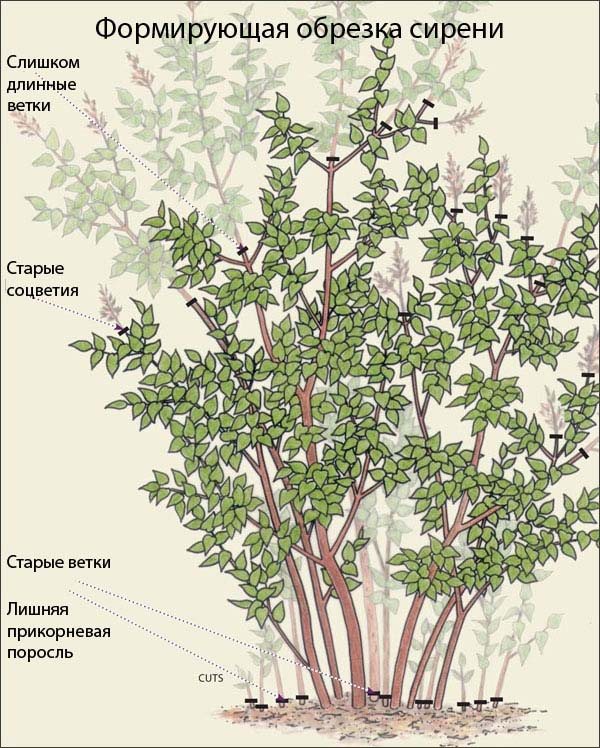

Thus, in order to maintain a beautiful shrub shape, as well as for its abundant flowering, lilac pruning should be done on a regular and systematic basis.
The fact of how to properly cut lilacs , you can see in the following video:
And you will find additional theoretical schemes for pruning lilacs and an explanation of why you need to do this in this video:
Of course, do not forget to perform sanitary pruning every spring and during the summer and autumn , removing all damaged and dry branches .

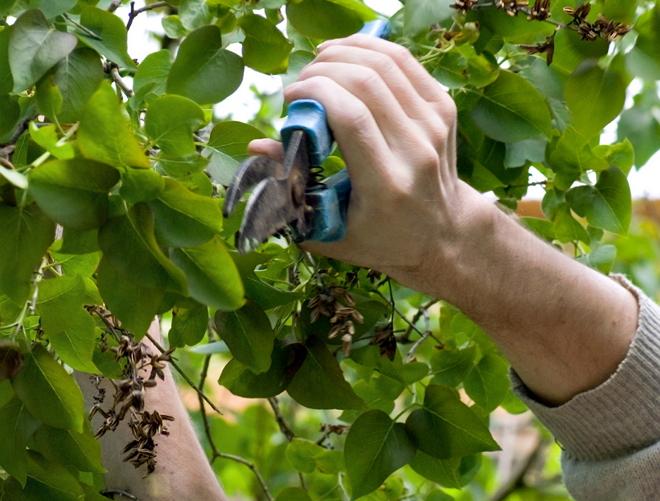
If you received an old and overgrown lilac along with the site, then in order to bring it back to life, you need to carry out its rejuvenating pruning. As for the timing, it is usually recommended to do this in early spring or after flowering.
The essence of “cardinal” cropping is shown in the picture. Namely, you need to cut off all old branches very strongly and low, as well as completely get rid of excess root growth.
However, it is not necessary to cut the lilac so much to rejuvenate it: it is enough just to shorten all branches to the required length, but first thin it out (completely remove excess thickening shoots, as well as root growth).
Yes, this and / or next year will no longer bloom such lilacs, but in any case you will have to sacrifice something.

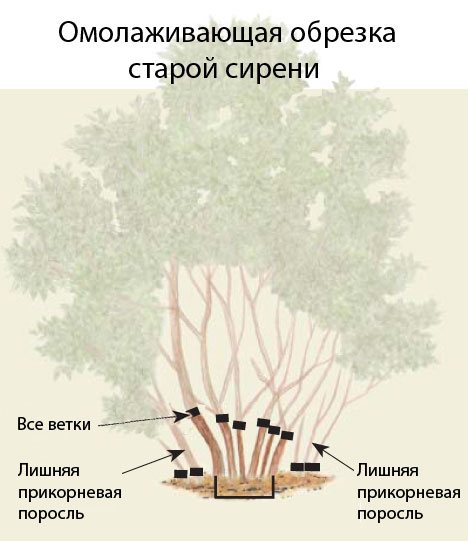
How the phases of the moon affect


Even our ancestors in ancient times noticed that the cycles of the night luminary affect many material processes associated with water. Thus, the ancient doctor and expert in medicine Avicenna performed abdominal operations only during the full moon period, because it improved the healing of wounds after surgery. In winter, the Scandinavians stabbed cattle only on the young moon, so that the meat had less water, the muscle fibers were dense. Socrates noted that the ebb and flow of the seas and oceans are associated with a two-week change in the fullness of the month.
It is best to plant lilac seedlings in open ground on the growing moon, since during this period the circulation of juices in the root system is minimal, if the radix is damaged, the wounds will quickly heal, the loss of cellular fluid will be minimal.
Seeds and seedlings planted closer to the young moon require less watering than those planted in the ground for a full month. Agronomists explain this effect by the flow of liquid in the humus: the larger the night star, the more moisture comes out to the soil surface. Astrologers associate this phenomenon with the horary influence of the air and heavenly signs of the zodiac on the germination of the embryo in the seed and the formation of bulbous buds on the roots.
Autumn feeding of lilacs
In autumn, it is recommended to apply phosphorus- potassium fertilizers under lilacs (once every 2-3 years). For example, you can add 2-3 st. spoons of superphosphate and 2-3 tbsp. tablespoons of potassium sulfate per 1 bush, or 2-3 tbsp. spoons of nitroammophoska or even better diammophoska. Alternatively, you can perform liquid feeding with wood ash by dissolving 100-200 grams of ash in 10 liters of water.
Lilac loves alkaline soils, therefore, if your soil is acidic (yellow leaves, chlorous), then you should deoxidize it. Namely, it is worth pouring dolomite flour under the bush, or more often fertilize with wood ash .

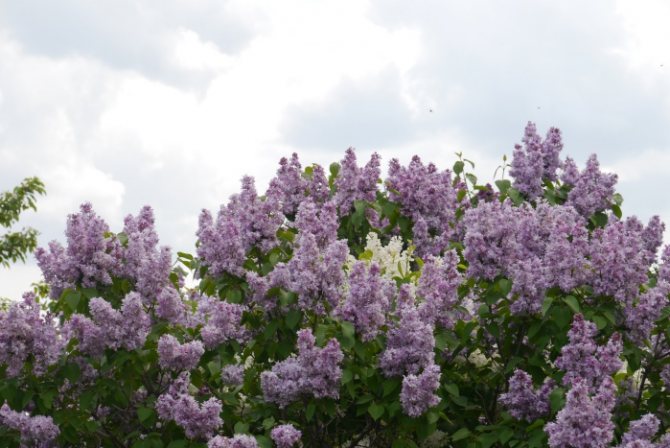
What fertilizers are used
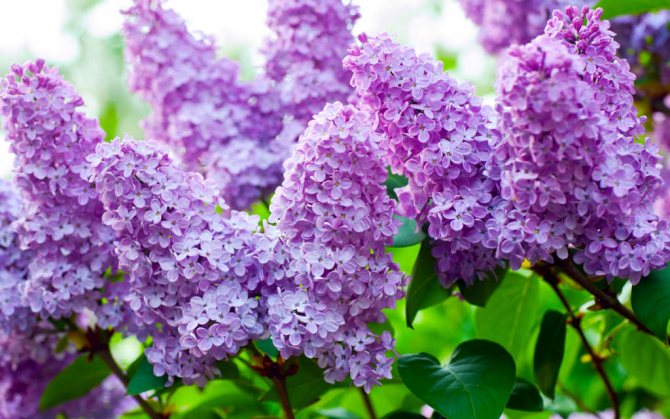
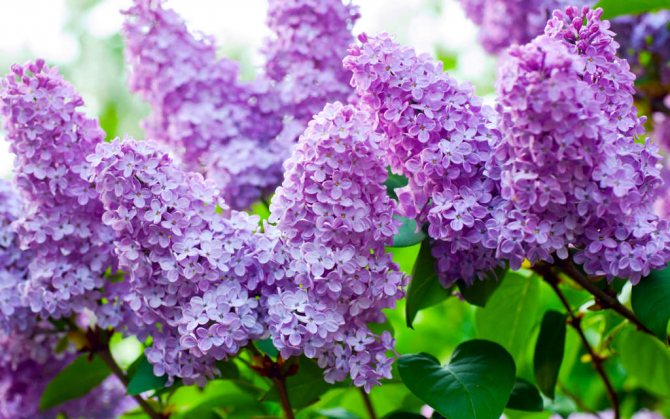
Lilac is very demanding on the content of humus in the soil, so the first rule of its successful cultivation is organic feeding.
- Organic matter is not only plant nutrition, but also the quality of the soil. The decomposition of plant and animal residues is carried out by soil bacteria, for which they serve as food. In turn, the processed substances contain nutrients for plants that can be absorbed. Thanks to organic matter, the earth is looser and air-permeable.
- Plant substances take longer to decompose and gradually release food into the soil, in contrast to minerals, which dissolve quickly, but also quickly wash out from the upper layer.
The disadvantage of organic fertilizers is the high price or their lack, since even in the village not everyone is engaged in raising cattle or poultry.
It is also necessary to apply mineral fertilizers. The first dose of nutrients is applied during the planting phase. How to feed lilacs: for better growth, it needs nitrogen . Moreover, it is brought in even in the fall.
In this, the plant differs from its counterparts, which should not be given nitrogen nutrition in the winter, so as not to freeze out. Saltpeter or urea is scattered even over the first snow, so that in spring the bush will come to life faster and start growing.
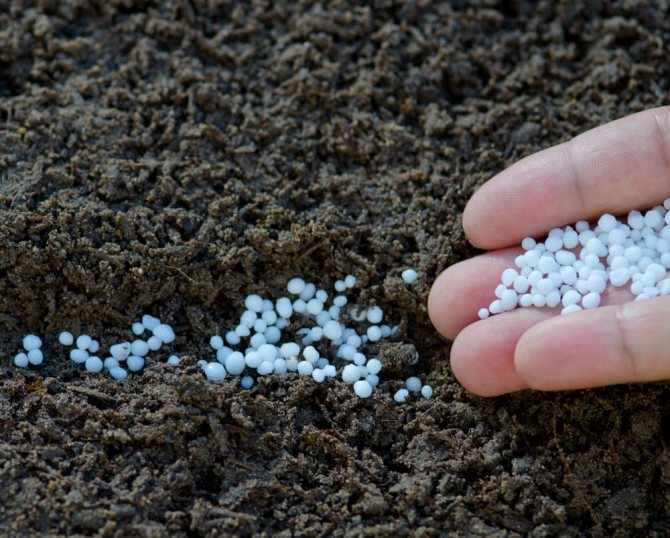
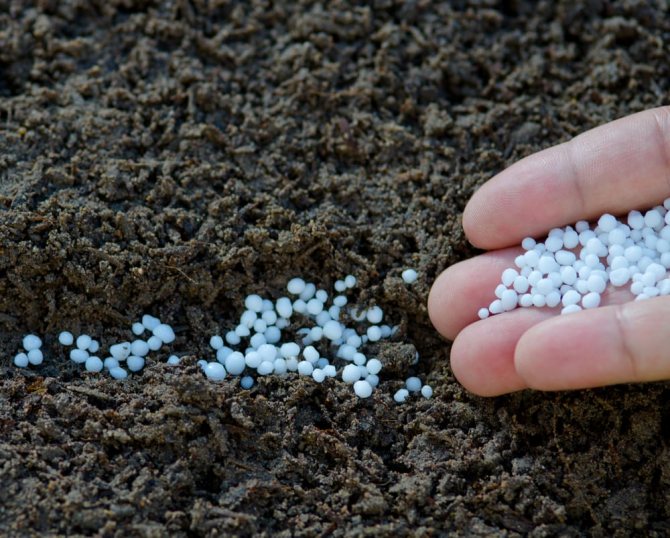
The second most important is potassium. Since the plant is abundantly flowering, the complex of fertilizers for lilacs in autumn and spring must include potassium nitrate, potassium sulfate or potassium salt.
The third nutrient is phosphorus. It ensures the growth of the roots and the bush as a whole. The appearance of the plant will depend on the presence of phosphorus. Potassium and phosphorus are added at the same time to help each other absorb.
In addition, lilac needs the presence of substances and trace elements necessary for development and growth in the soil: boron, copper, iron, sulfur, manganese, calcium, molybdenum, magnesium, zinc, iodine, cobalt, fluorine.
Lilacs are responsive to the application of different types of fertilizers to the soil:
- mineral (nitrogen, phosphorus, potash, limestone);
- complex (nitrophoska, ammophos, molybdates);
- organic (bird droppings, horse and cow manure, humus, compost, peat) and complex organic (ash);
- microfertilizers;
- soil-forming.
Typical mistakes in autumn care for lilacs
- The most dangerous mistake that many amateur flower growers make, which is why their lilacs do not bloom next year, is incorrect pruning of inflorescences. Namely, they break out the inflorescences along with the branches, on which flower buds should form in the future.
- In no case should plants be fed with nitrogen fertilizers in autumn.
It is believed that lilacs, in principle, should not be given organic matter, in which there is just a lot of nitrogen.
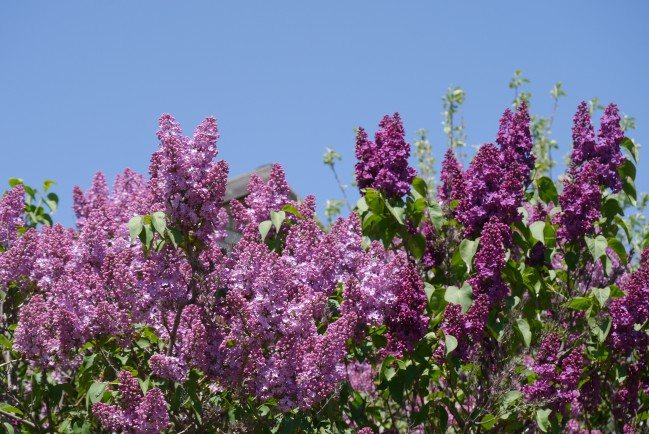
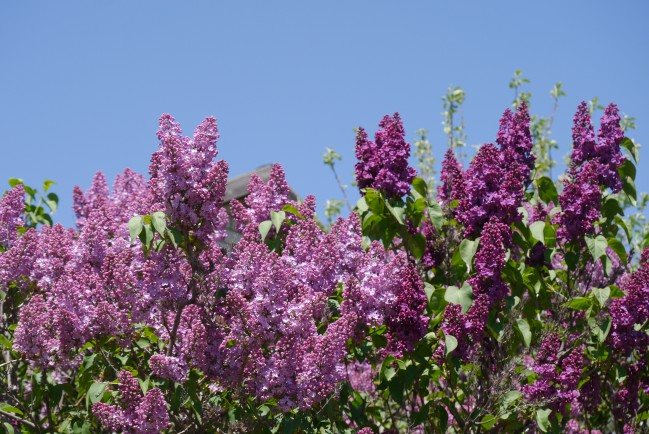
Well, there is nothing complicated in caring for lilacs after flowering: there is no need to specially prepare it for winter, just cut off faded inflorescences correctly.
Video: tips for the care and cultivation of lilacs from Andrey Tumanov
Description of the budley
In the wild, the budley of David grows in China in the mountains and along the river banks. Budleia is a deciduous, beautifully flowering shrub, the height of which can reach one and a half to two meters. Budleia has flexible, thin, arcuate branches at the ends, which bloom lush inflorescences. Varietal budleys have blue-purple, bright crimson, purple-red, lilac-blue, deep purple, white or lavender inflorescences with an orange seridin. The inflorescences of wild plants also have a bright orange center, and their color is dark purple. The leaves are dark green, with pointed ends, twenty-five centimeters long. The underside of the leaf is silvery gray. The bark on old branches turns gray and cracked. On one branch in the fall, buds, flowers and even fruits may be present.

